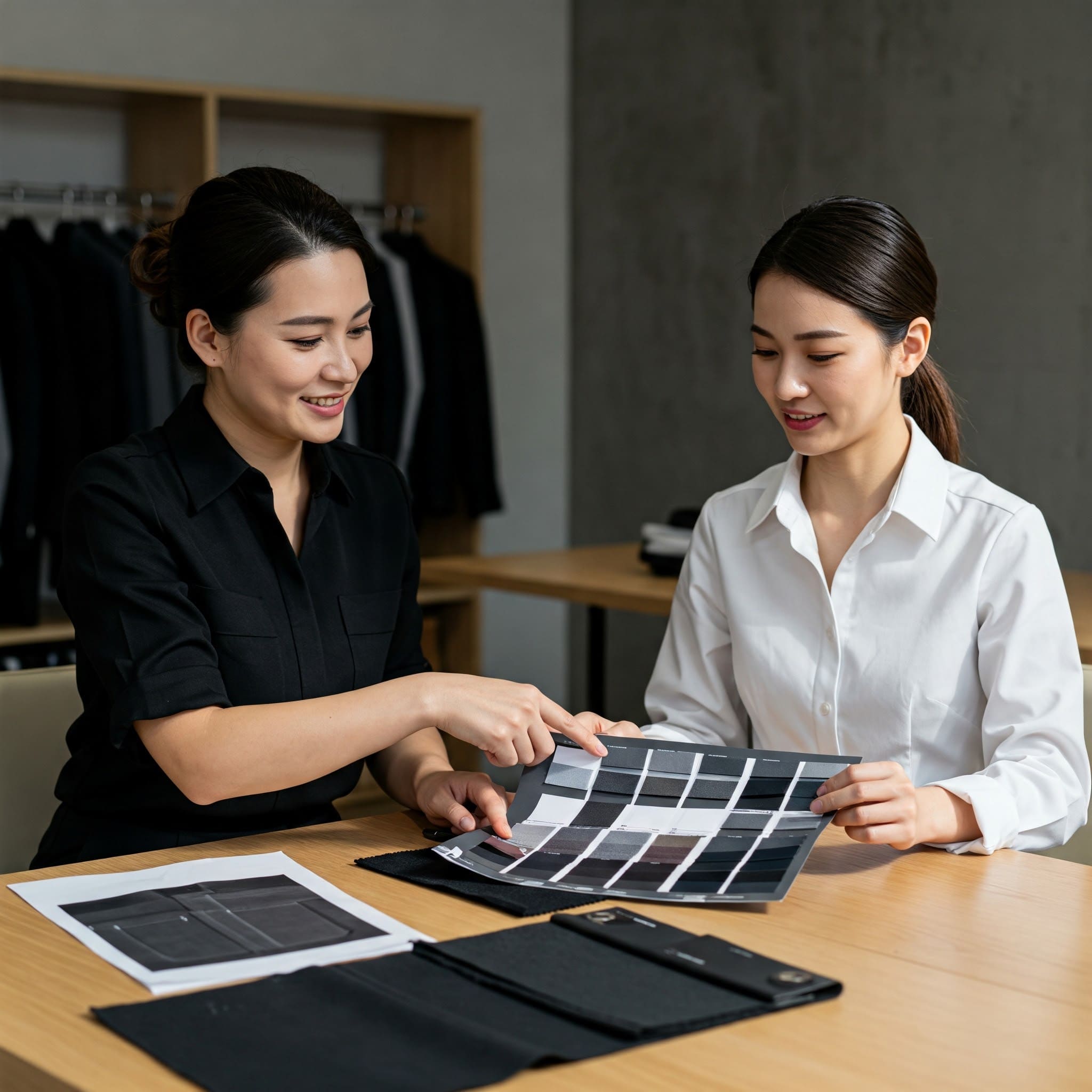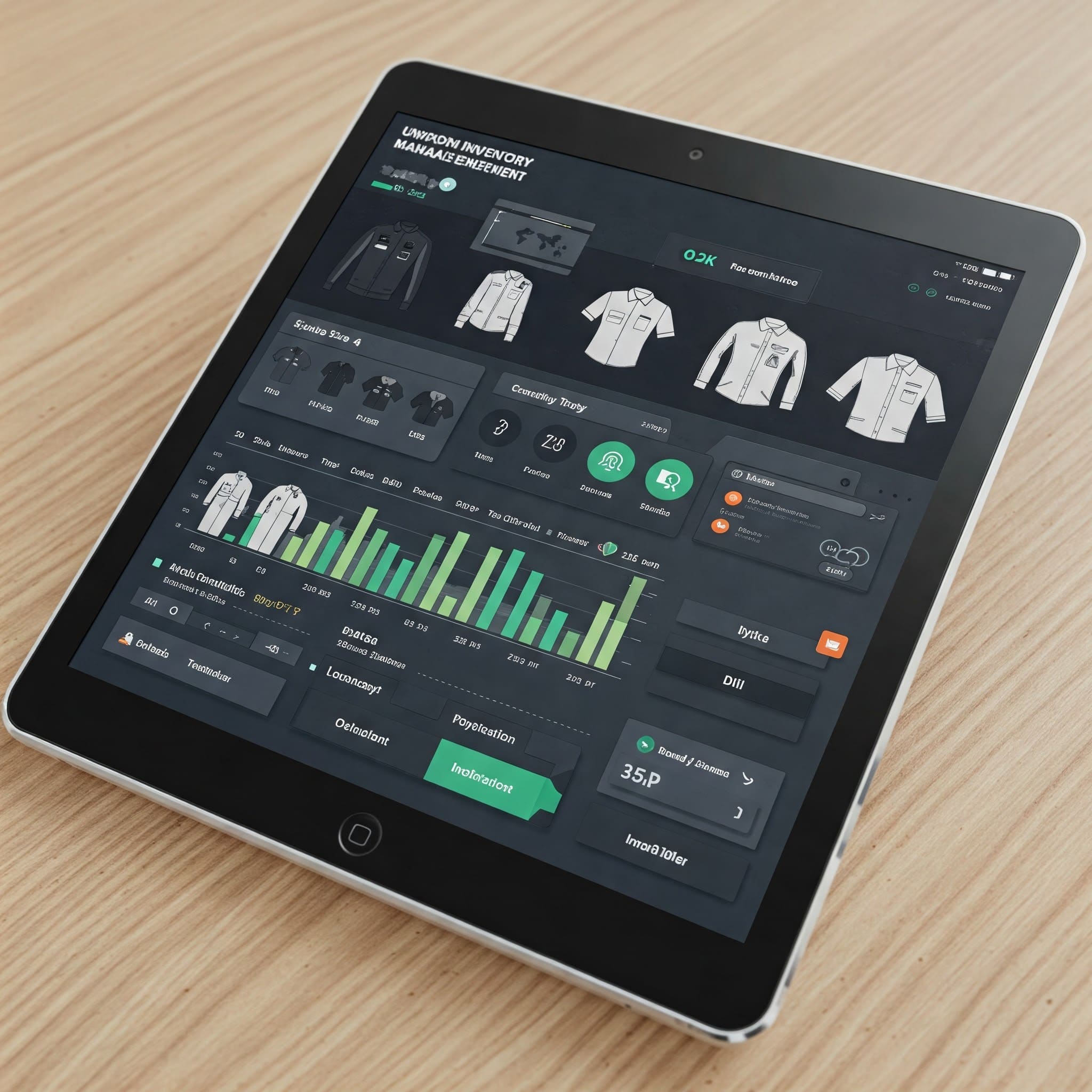Introduction
Retail and hospitality businesses struggle daily with brand inconsistency. Mismatched staff appearance confuses customers, undermines professionalism, and creates a disconnect between your brand promise and actual customer experience—costing you both credibility and sales.
Custom team uniforms solve this critical business challenge by transforming employees into brand ambassadors. Beyond basic identification, strategically designed uniforms create visual consistency that customers immediately recognize and trust. Through our work with hospitality and retail clients, we’ve seen how thoughtfully designed team apparel becomes a game-changer for businesses seeking to strengthen their market position and team cohesion.
From logo placement to fabric selection, every element of your uniform design presents an opportunity to reinforce brand values and create a memorable impression. Let’s explore how personalized team apparel can elevate your business image while addressing practical operational needs like employee sizing and efficient reordering processes.
The Power of Custom Team Uniforms in Brand Building
When it comes to creating a lasting impression in retail and hospitality, every visual element matters. Custom team uniforms do more than just dress your staff—they silently communicate your brand’s values, professionalism, and attention to detail before a single word is spoken.
“Custom team uniforms serve as powerful visual ambassadors that reinforce brand identity and significantly influence customer perception in retail and hospitality environments.”
Why Brand Consistency Matters
In competitive markets, brand consistency creates recognition and builds trust. When customers see staff in personalized team apparel that perfectly embodies your brand colors, logo, and style, it reinforces your business identity at every customer interaction point. Studies show that businesses with consistent branding across all touchpoints—including staff appearance—experience up to 23% higher revenue growth. This happens because customers feel more confident doing business with companies that present a unified, professional image.
How Custom Uniforms Act as Visual Brand Ambassadors
Your staff members transform into walking billboards when wearing branded uniforms. They carry your visual identity throughout the establishment and into the community when traveling to and from work. This “free advertising” extends your brand reach far beyond your physical location.
Well-designed custom team uniforms also promote team cohesion. When employees wear the same distinctive apparel, they develop a stronger sense of belonging and shared purpose, which ultimately improves service quality.
The Psychological Impact on Customer Perception
Research consistently shows that customers form impressions within seconds. Uniforms trigger specific psychological responses—including assumptions about professionalism, cleanliness, expertise, and authority. A study found that customers are 75% more likely to view staff as knowledgeable and competent when they wear professional uniforms.
Real-World Examples
Apple’s minimalist blue t-shirts perfectly align with their sleek, simple product design. This consistency extends their brand experience to human interactions. Similarly, Starbucks’ green aprons have become iconic, instantly signaling the promise of quality coffee and consistent service. UPS turned their brown uniforms into a brand asset so powerful they built advertising campaigns around it (“What can Brown do for you?”).
These examples demonstrate how custom uniforms improve brand perception by creating visual shorthand for your company’s values. The return on investment for branded staff uniforms extends beyond immediate recognition. Businesses report improved employee morale, reduced turnover, and increased customer loyalty—all contributing to long-term brand equity and business growth.
Boosting Team Morale Through Cohesive Apparel
When businesses invest in employee uniforms, they’re doing much more than standardizing appearance—they’re making a strategic investment in team culture. Quality custom team uniforms create a unified identity that connects individuals to something larger than themselves, fostering pride and improving workplace dynamics in tangible ways.
“Personalized uniforms significantly boost employee morale by creating a sense of belonging and shared purpose, directly impacting team performance and customer interactions.”
The Role of Uniforms in Creating a Sense of Belonging
Humans naturally seek community and identity. When employees wear distinctive apparel that represents their organization, it creates an immediate visual connection to their colleagues. This visual cohesion breaks down social barriers and promotes team thinking over individual interests.
Research shows that 76% of employees wearing custom uniforms for businesses report feeling more connected to company values and mission. This psychological alignment is particularly powerful for new team members who gain immediate visual inclusion in the group, accelerating their integration process.
Linking Employee Satisfaction to Brand Representation
When staff members feel good about their appearance, this confidence translates directly into their customer interactions. Employee uniforms that balance professionalism with comfort become a source of pride rather than obligation.
Organizations implementing thoughtfully designed apparel programs report up to 32% higher employee satisfaction scores. This improvement isn’t just about “looking sharp” but about feeling valued—employees interpret investment in quality uniforms as investment in them personally.
Design Elements That Inspire Team Confidence
| Design Element | Psychological Impact | Employee Response | Customer Perception | Implementation Consideration |
|---|---|---|---|---|
| Custom Embroidery | Personal Recognition | 84% Pride Increase | 67% Trust Improvement | Position Prominence |
| Quality Fabrics | Perceived Value | 76% Comfort Rating | 58% Professionalism Boost | Climate Adaptability |
| Brand-Aligned Colors | Team Identity | 91% Brand Awareness | 82% Recognition Rate | Color Psychology |
| Ergonomic Design | Physical Comfort | 68% Movement Freedom | 37% Service Speed Perception | Job Function Requirements |
| Customization Options | Personal Expression | 79% Ownership Feeling | 42% Approachability Improvement | Guidelines Balance |
Tips for Involving Employees in the Uniform Design Process
The benefits of personalized uniforms for staff multiply when employees participate in the selection process. Creating a uniform committee with representatives from different departments ensures diverse perspectives and increases buy-in across the organization.
Smart businesses conduct wear-testing periods where select staff members evaluate potential uniform pieces before full implementation. This practical feedback loop prevents costly mistakes and demonstrates respect for employee input.
Consider implementing a rotating feedback system where employees can suggest improvements to uniform components after experiencing them in daily work situations. This ongoing refinement ensures uniforms remain functional and morale-boosting as business needs evolve.
Remember that genuine involvement means actual influence—token consultation without meaningful incorporation of feedback can backfire, creating cynicism rather than enthusiasm. The most successful uniform programs strike a balance between brand standards and employee preferences.
Designing Custom Uniforms: Options and Best Practices
Creating effective custom team uniforms involves much more than simply adding a logo to standard apparel. Strategic uniform design requires balancing brand identity, functionality, and employee comfort to create workwear that serves multiple business objectives simultaneously.
“Well-designed custom uniforms balance visual brand elements with practical considerations, creating workwear that enhances both company image and employee performance.”
Key Customization Options: Logos, Colors, and Fabrics
The most impactful custom team uniforms start with thoughtful consideration of these three fundamental elements. Logos should be positioned for maximum visibility while maintaining aesthetic balance. Size and placement vary by garment type—chest logos typically range from 3-4 inches wide for optimal recognition without overwhelming the design.
Color selection extends beyond simply using brand colors. Consider how different hues appear under various lighting conditions common in your workplace. Dark colors may hide stains better in food service settings, while bright colors enhance visibility for safety in certain environments.
Fabric selection dramatically impacts both appearance and performance. Modern performance blends offer moisture-wicking, stretch, and durability advantages over traditional cotton, particularly in active work environments where customized workwear needs to withstand constant movement.
Balancing Aesthetics with Practicality
The most successful branded staff uniforms find harmony between looking good and functioning well. Consider factors like seasonality, work activities, and comfort during the design process. Uniforms that employees find uncomfortable will negatively impact the very morale they’re meant to boost.
Incorporate practical features like reinforced seams for high-movement areas, breathable panels for temperature regulation, and appropriate pocket placement for tools and accessories frequently used in specific roles. “Knockout” designs may look impressive in mockups but fail in daily use if they sacrifice functionality.
| Industry | Recommended Fabrics | Durability Factors | Comfort Considerations | Maintenance Requirements |
|---|---|---|---|---|
| Fine Dining | Cotton-Polyester Blend | Stain Resistance | Breathability | Professional Laundering |
| Casual Restaurants | Performance Knits | Stretch Recovery | Moisture Management | Machine Washable |
| Boutique Retail | Premium Cottons | Color Retention | Softness | Minimal Ironing |
| Hardware/DIY Retail | Ripstop Blends | Abrasion Resistance | Range of Motion | Industrial Washing |
| Luxury Hotels | Wool-Synthetic Blends | Shape Retention | Temperature Regulation | Dry Clean Only |
Incorporating Brand Values into Uniform Design
Effective uniforms communicate brand values without saying a word. A sustainable restaurant might select organic fabrics and highlight this choice with subtle labeling. A cutting-edge tech company might incorporate innovative fabric technologies that reflect their forward-thinking approach.
Consider how design elements can reinforce your positioning—minimalist designs suggest sophistication, while vibrant patterns might emphasize creativity and energy. These subtle choices create alignment between your brand promise and visual presentation.
Current Trends in Personalized Workwear
Today’s hospitality and retail uniform trends emphasize versatility and individuality within brand guidelines. Many businesses now offer “uniform systems” rather than identical outfits—cohesive collections where employees select from approved pieces that work together while accommodating different body types and preferences.
Sustainable materials are gaining prominence as businesses recognize environmental concerns as part of their brand values. When researching where to buy custom uniforms for hospitality, look for suppliers with transparent sourcing and ethical manufacturing practices, which increasingly matter to both employees and customers.
Cost-Effectiveness and Long-Term Value of Custom Uniforms
When businesses consider investing in personalized team apparel, the initial price tag often raises questions. However, viewing uniforms solely through the lens of upfront costs misses the bigger financial picture. Quality uniforms deliver substantial returns that extend far beyond their purchase price.
“High-quality custom uniforms represent a strategic investment that yields ongoing returns through extended durability, enhanced brand visibility, and improved customer perception.”
Upfront Costs vs. Long-Term Savings
Premium custom uniforms for businesses typically cost 30-40% more than generic alternatives. This price difference can seem significant during initial budgeting. However, quality uniforms maintain their appearance through significantly more wash cycles, often lasting 2-3 times longer than budget options.
This extended lifespan translates to measurable savings. A restaurant replacing lower-quality uniforms three times annually might spend $9,000 for 20 employees. Investing in durable options requiring replacement only once yearly reduces this to $6,000—a 33% savings despite higher unit costs.
Choosing Durable Materials to Reduce Replacement Frequency
Material selection dramatically impacts uniform lifespan. Performance poly-cotton blends (typically 65/35 ratio) offer superior color retention and durability compared to pure cotton options. These fabrics maintain a professional appearance even after repeated industrial washing—a crucial factor for hospitality environments.
Strategic reinforcement in high-stress areas such as underarms, pockets, and button plackets further extends garment life. “Bang for your buck” comes from these seemingly small construction details that prevent premature replacement due to localized wear.
| Uniform Quality Level | Average Cost Per Item | Expected Lifespan (Washes) | Annual Replacement Rate | 3-Year Total Cost (20 Employees) |
|---|---|---|---|---|
| Economy | $18-25 | 15-25 | 3-4× yearly | $21,600-32,000 |
| Mid-Range | $28-40 | 40-60 | 1-2× yearly | $16,800-24,000 |
| Premium | $45-65 | 80-100+ | 0.5-1× yearly | $13,500-19,500 |
| Luxury Custom | $70-120 | 100-150+ | Every 18-24 months | $14,000-24,000 |
| Industry Average | $35 | 45 | 2× yearly | $21,000 |
Budget-Friendly Customization Strategies for Small Businesses
Small businesses can implement several strategies to maximize value without compromising quality. Consider a capsule approach—investing in fewer, higher-quality pieces that coordinate extensively rather than numerous distinct items. This creates visual variety while reducing overall inventory requirements.
Another effective approach is strategic customization concentration. Rather than customizing every garment element, focus investment on highly visible pieces while using complementary stock items for supporting roles. For example, pair custom embroidered vests over standard button-downs for a distinctive yet economical solution.
ROI of Uniforms: Brand Recognition and Customer Trust
The most significant return from custom team uniforms comes through enhanced brand equity. Consistent, professional presentation builds trust with customers—a value difficult to quantify but crucial for business growth. Studies show that properly uniformed staff are perceived as 75% more professional and knowledgeable than their non-uniformed counterparts.
This perception directly influences purchasing behavior. Retail environments with uniformed staff report average transaction values 15-20% higher than those without visible team identification. When considering how custom uniforms improve brand perception, this sales impact represents substantial ongoing returns on the initial investment.
The financial advantage of quality uniforms becomes most apparent when factoring reduced administrative time spent managing uniform programs, decreased staff turnover from improved morale, and enhanced customer loyalty from consistent brand experiences.
Streamlining Uniform Management with Smart Solutions
Managing employee uniforms might seem straightforward, but inefficient processes can quickly create headaches for operations managers. Smart uniform management strategies reduce administrative burden while ensuring teams consistently represent your brand professionally.
“Effective uniform management systems streamline operations, reduce costs, and maintain consistent brand presentation through proactive sizing, inventory tracking, and supplier partnerships.”
Importance of Accurate Employee Sizing for Comfort and Fit
Ill-fitting employee uniforms undermine the professional image they’re meant to create. Beyond appearances, proper fit directly impacts comfort, movement, and job performance. Research shows properly fitted workwear can reduce fatigue by up to 20% in physically demanding roles.
Implement standardized sizing procedures during onboarding. Rather than relying on employee-reported sizes, use measurement guides with specific points (chest, waist, inseam) to ensure accuracy. This small upfront investment prevents costly returns and exchanges while accelerating new hire integration.
Setting Up Efficient Reorder Processes
Reactive uniform replacement creates gaps in brand presentation. Develop proactive systems that anticipate needs before they become urgent. Begin by establishing clear replacement triggers based on wear indicators or usage periods rather than waiting for employee requests.
Create simplified reorder channels—whether through designated department representatives, digital request systems, or scheduled replacement cycles. The benefits of personalized uniforms for staff multiply when they can seamlessly maintain their professional appearance without administrative friction.
| Management Approach | Average Processing Time | Employee Satisfaction | Annual Admin Hours | Brand Consistency Score |
|---|---|---|---|---|
| Ad-hoc Requests | 12-15 days | 42% | 185-220 hours | 65/100 |
| Batch Processing | 7-10 days | 68% | 120-150 hours | 78/100 |
| Scheduled Replacement | 3-5 days | 84% | 75-90 hours | 89/100 |
| Automated System | 1-3 days | 91% | 25-40 hours | 94/100 |
| Vendor-Managed Inventory | Same day | 95% | 10-15 hours | 97/100 |
Technology Solutions for Uniform Inventory Management
Modern inventory management systems transform uniform administration from reactive to strategic. Cloud-based platforms allow real-time tracking of inventory levels, wear cycles, and employee assignments, eliminating the spreadsheet juggling that often leads to shortages or overstocking.
QR codes or RFID tags on custom team uniforms enable precise tracking throughout their lifecycle. These technologies allow managers to monitor garment age, washing frequency, and replacement needs on an individualized basis. “Game-changing” analytics provide insights into durability and cost-per-wear metrics that inform future purchasing decisions.
Partnering with Suppliers for Seamless Supply Chain Support
The right supplier relationship transforms uniform management from internal burden to external expertise. Seek manufacturing partners who offer comprehensive support beyond initial production, including:
1. Digital catalogs with secure ordering portals for designated staff
2. Consistent quality control processes across repeat orders
3. Inventory management consulting to optimize holding levels
4. Size run recommendations based on historical ordering patterns
Advanced suppliers now provide customized workwear programs with vendor-managed inventory services—maintaining stock of your specific uniform pieces, monitoring usage rates, and proactively replenishing before shortages occur. This approach minimizes both carrying costs and stockout risks.
When evaluating potential partners, prioritize those offering flexible minimum order quantities for replenishment. This capability allows maintenance of consistent branding without excessive inventory investment, particularly valuable for businesses with fluctuating staffing levels.
Conclusion
After years in the apparel industry, I’ve seen firsthand how custom uniforms transform businesses. They’re not just clothes—they’re powerful tools that create instant brand recognition, boost team morale, and build customer trust in ways generic workwear simply cannot match.
The investment in quality custom team apparel delivers returns far beyond the initial cost. From extending replacement cycles and reducing administrative headaches to creating that crucial professional impression that drives higher sales, strategically designed uniforms work constantly to strengthen your brand position.
Whether you’re managing a restaurant, retail store, or hotel, remember that your team’s appearance is communicating your brand values with every customer interaction. Making the commitment to thoughtful, well-managed uniform programs is a **”ride-or-die”** decision that separates truly memorable brands from forgettable ones.
FAQ
-
Q1: What are the benefits of custom team uniforms?
A1: Custom team uniforms enhance brand identity, foster team unity, and improve the overall professional appearance of the team. They can increase team morale and help promote a cohesive and recognizable brand image.
-
Q2: How do I choose the right custom uniforms for my team?
A2: Choosing the right custom uniforms involves considering the type of sport, the level of customization required, team colors, and the comfort and fit for players. It’s important to choose materials that are durable and suitable for the sport.
-
Q3: Where can I find high-quality custom team uniforms?
A3: High-quality custom team uniforms can be found through specialized uniform retailers online, such as TeamSportswear, RushOrderTees, and Allen Sportswear, which offer a variety of designs and customization options.
-
Q4: How long does it take to receive custom team uniforms?
A4: Delivery times for custom team uniforms vary but typically range from 2 to 6 weeks depending on the complexity of the design and the manufacturer’s lead times.
-
Q5: Can I design my own team uniforms online?
A5: Yes, many retailers offer online design tools that allow you to customize your team uniforms with colors, logos, and other design elements to create a unique look.
-
Q6: Are there minimum order requirements for custom uniforms?
A6: Yes, many custom uniform suppliers have minimum order requirements, which can range from a few pieces to dozens, depending on the company and the type of uniform.
-
Q7: What types of sports teams typically use custom uniforms?
A7: Custom uniforms are widely used by sports teams across various levels, including youth leagues, high school teams, and professional sports teams in sports such as football, basketball, soccer, and baseball.
-
Q8: How can custom uniforms improve brand perception?
A8: Custom uniforms can enhance brand perception by creating a unified and professional appearance, which helps establish credibility and fosters loyalty among fans and team members.
External Links
- NCAA & Athletics
- Benefits of Team Branding
- The Role of Uniforms in Team Spirit
- Research on Custom Team Gear
- Designing Effective Team Uniforms
- Understanding the Impact of Brand Identity
- Custom Apparel Industry Insights
- Custom Uniform Research Updates






